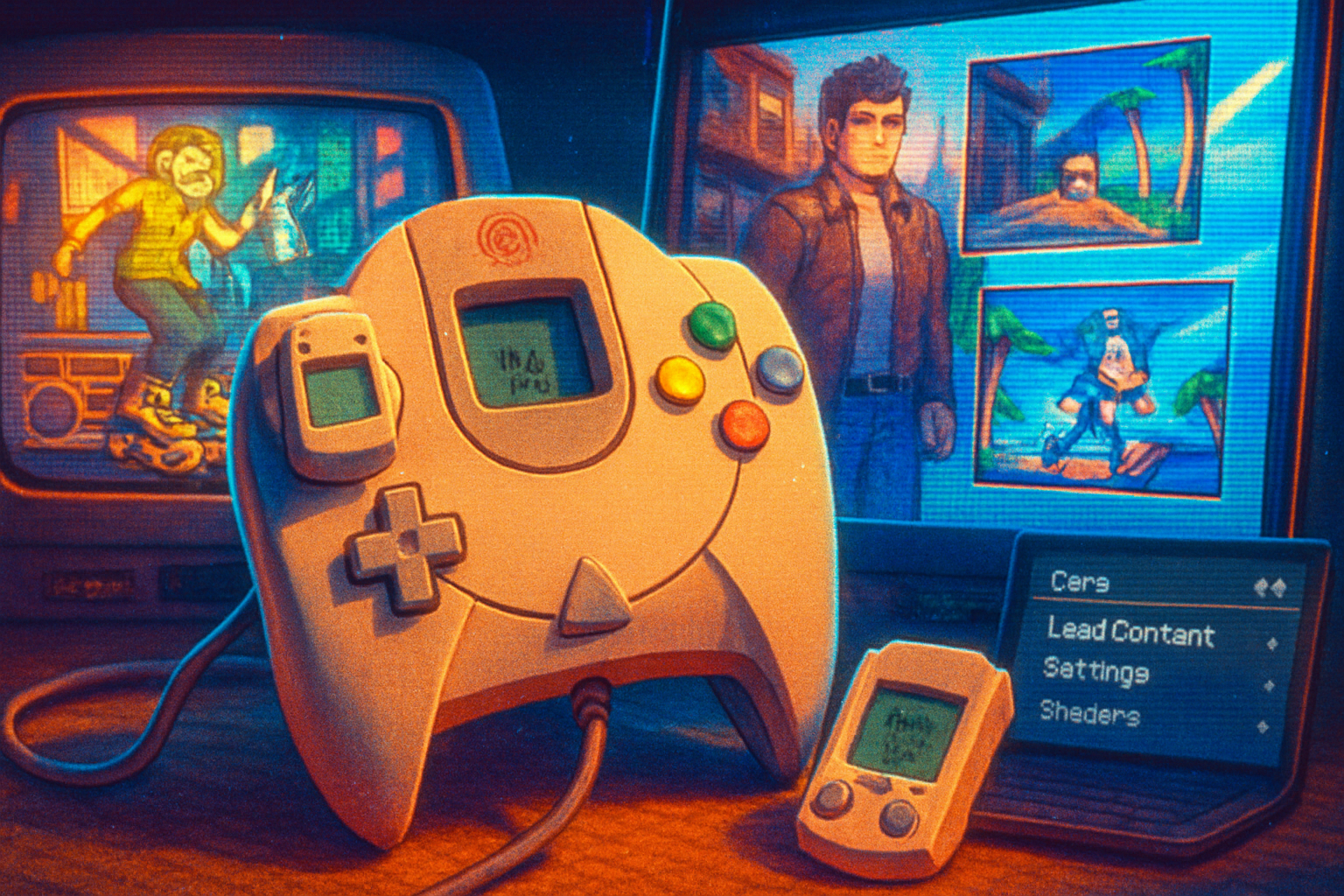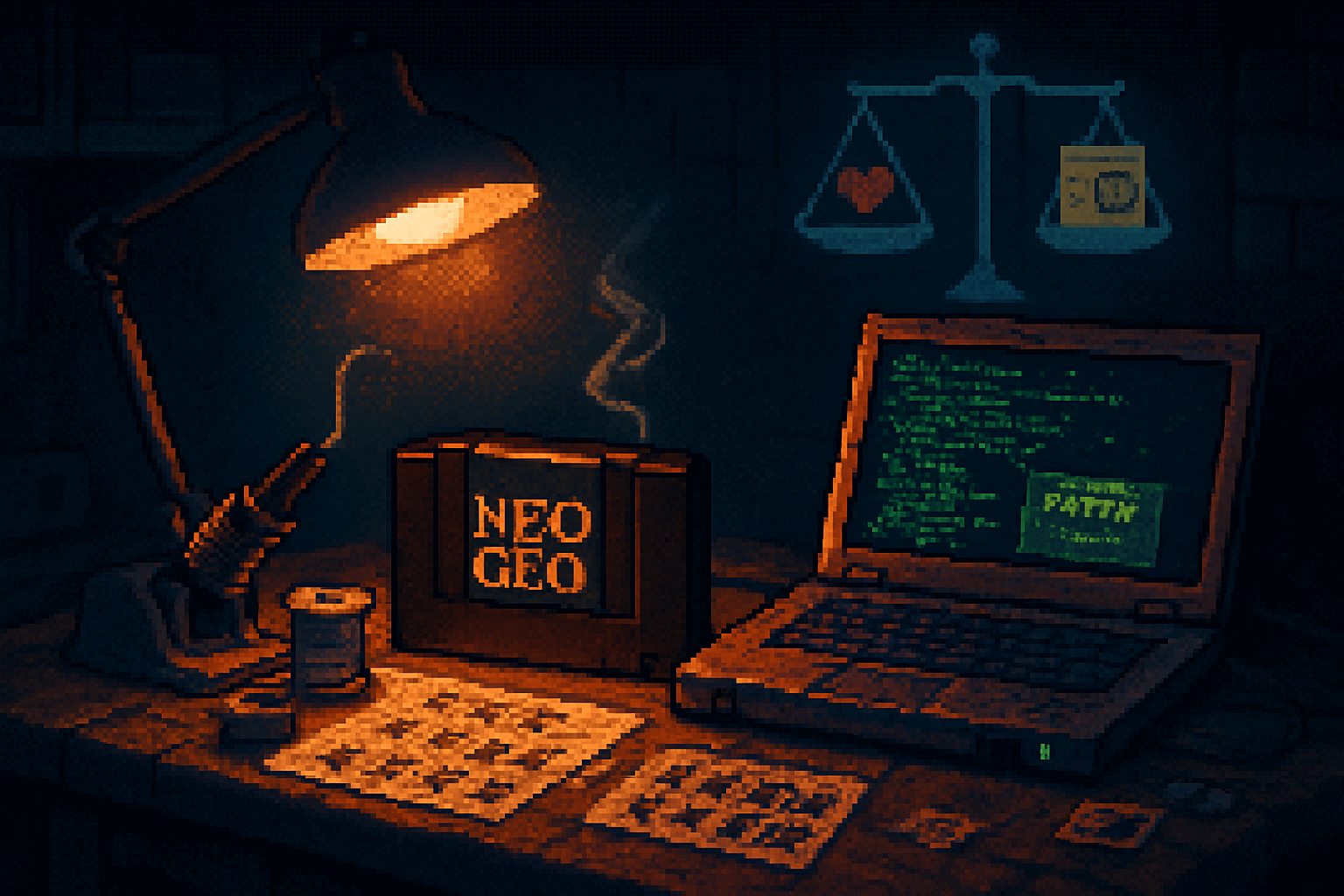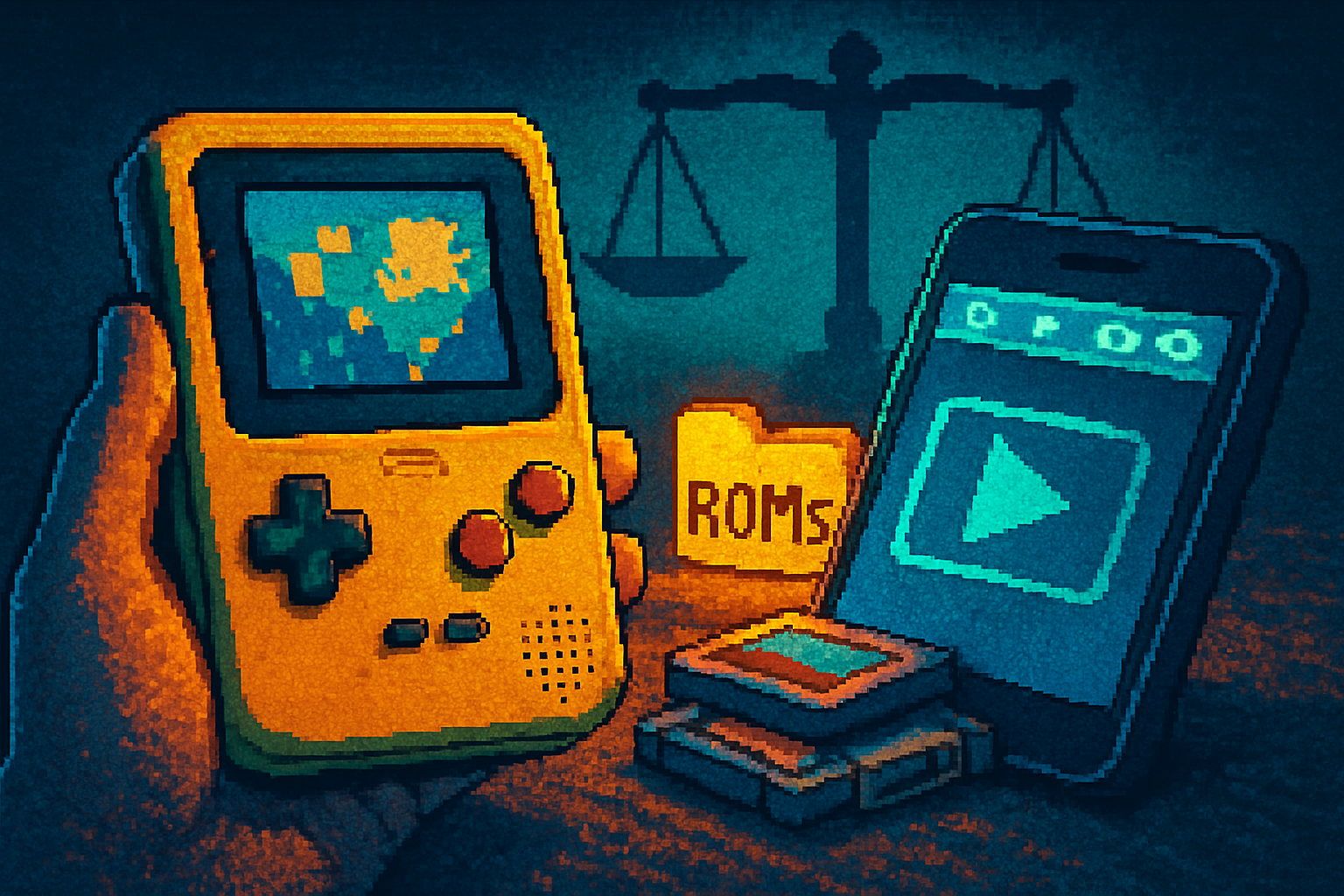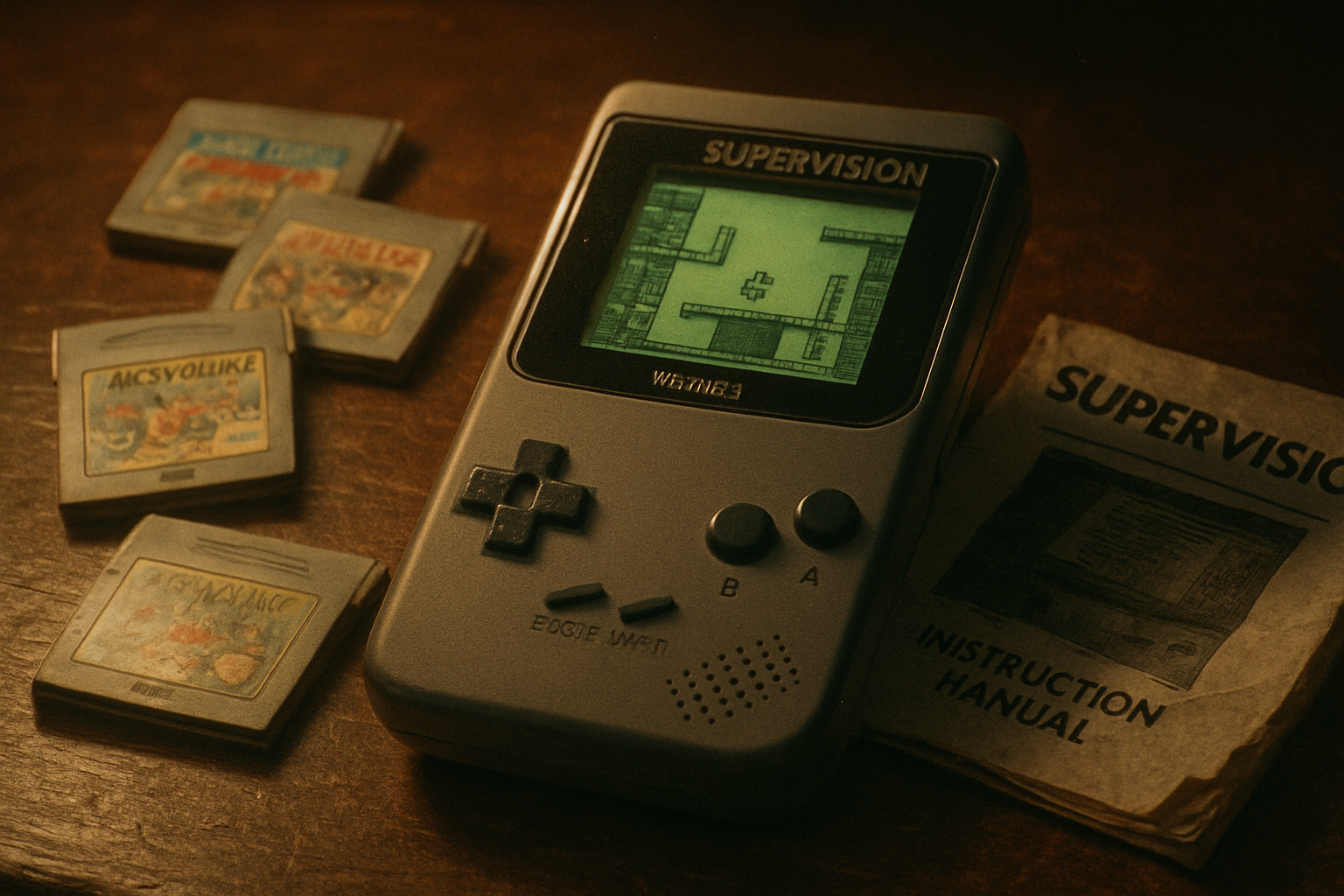· retrogaming · 6 min read
The Resurgence of Sega Dreamcast: Why It's Worth Revisiting Classic Titles
Two decades after its demise, the Dreamcast's daring designs and strange little inventions still hum with ideas. This post explains why those games matter today - to players, historians and modern developers.
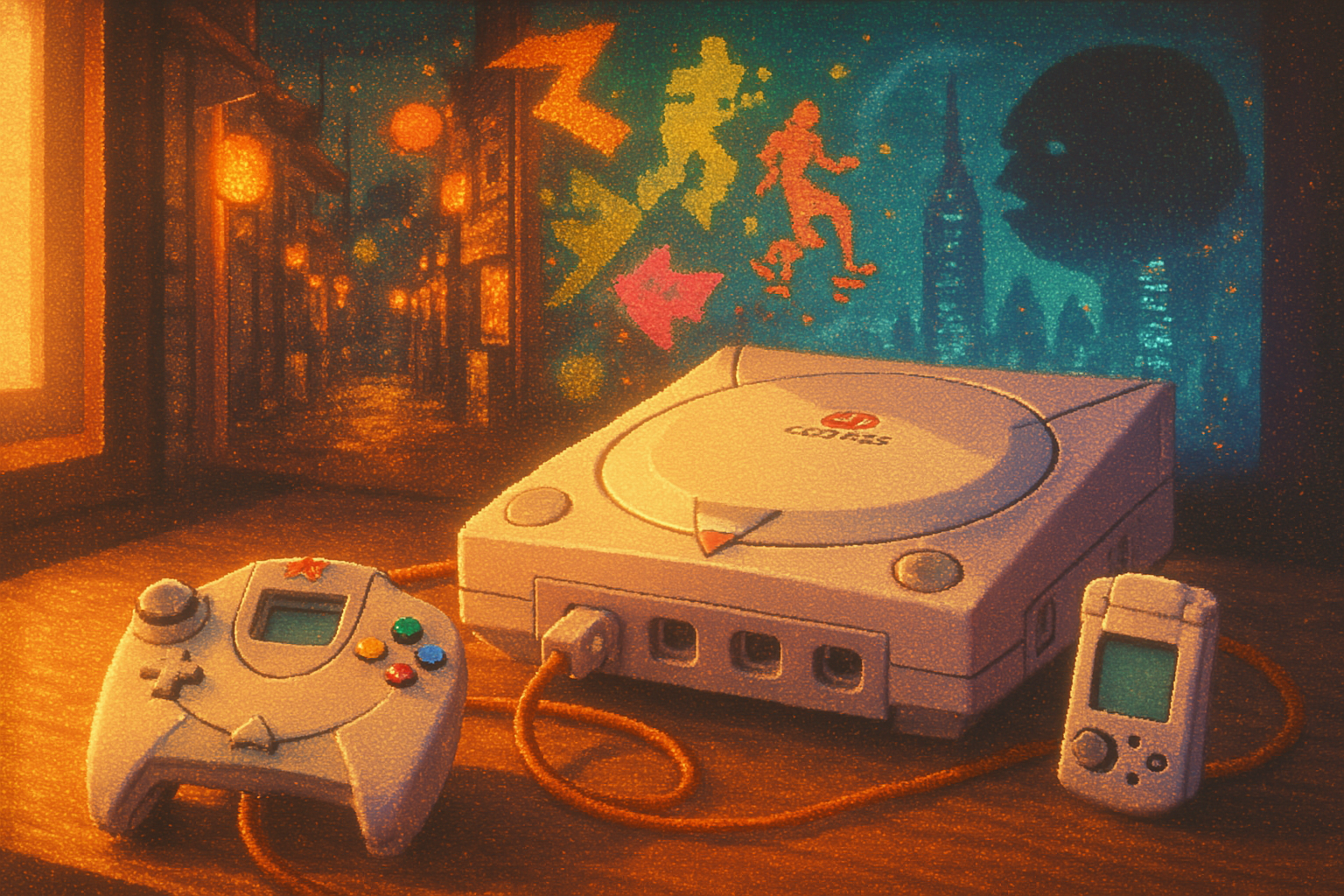
It’s a small thing but it sticks in the memory: a white triangle of plastic tucked under a CRT’s glow, an orange swirl on the startup screen, and a cartridge-shaped memory unit that looked like a tiny, beeping Tamagotchi. I remember thinking - with the unearned confidence of a teenager - that this console was trying too hard to be different. That eagerness, that appetite for oddity, is exactly why the Dreamcast deserves a second life.
The Dreamcast failed commercially, but it never stopped being interesting. More than nostalgia, what keeps people returning to its library is the way its games dared to be experimental, human, and occasionally, gloriously mad. Here’s why revisiting Dreamcast titles is worthwhile - and instructive for anyone who cares about where games come from next.
The Dreamcast’s secret superpower: constraints that spark invention
Consoles don’t invent genres by themselves; they force designers to bend. Limited horsepower, a short lifespan and a David-versus-Goliath corporate story pushed Sega’s developers toward choices bigger on imagination than on muscle. The Dreamcast birthed bold experiments because Sega needed attention and developers needed to capture it fast.
Think of it like cooking with a gas stove that flames unpredictably: you can burn the roast, or you can learn quick, flavorful techniques that a slow oven would never teach you. That rough, improvised brilliance shows up across the Dreamcast’s catalogue.
What the Dreamcast got right (and what modern devs still copy)
Innovative online: Phantasy Star Online was one of the first console MMORPGs, teaching console developers the value of persistent social spaces and seamless online matchmaking long before Live and PlayStation Network were mature. It’s a direct ancestor of many modern social game structures. Phantasy Star Online - Wikipedia
Playful hardware design - the Visual Memory Unit (VMU) was not a gimmick so much as a human-centered interface experiment - a tiny, portable companion that displayed mini-games, saved data, and offered asynchronous interactions between players. That notion of personal, pocketed interaction prefigures much of today’s cross-device thinking.
Aesthetic risk-taking: Jet Set Radio’s cel-shaded graffiti world is still the shorthand for “stylish rebellion” in game design. Its willingness to fuse urban culture, punk soundtracks and a radical visual language pushed how visuals could communicate attitude. Jet Set Radio - Wikipedia
Narrative ambition: Shenmue attempted real-world pacing and emergent life simulation in ways that were unpopular at first and influential later. Long silences, slow economies, and NPC schedules were derided as dull - until open-world games learned to treat presence and routine as mood-making tools. Shenmue - Wikipedia
Weird interactive experiments: Seaman remains a textbook example of platform-as-performance - a bizarre virtual pet that required conversation and attention, showing how voice and character can create uncanny empathy. Seaman - Wikipedia
Accessible arcade thrills: Crazy Taxi distilled the intoxicating immediacy of arcade design into a home console hit - short, addictive loops that prioritized joy and mechanical clarity.
If you trace modern indie sensibilities - concise mechanics, personal interfaces, aesthetic distinctiveness - you’ll see Dreamcast fingerprints all over them. Polygon’s Dreamcast retrospective captures some of this lineage well. Polygon on Dreamcast
Titles to play (and what they’ll teach you)
Shenmue - Play it for - the brutal honesty about time and attention. What it teaches: environmental storytelling, NPC routines, and the power of atmosphere.
Jet Set Radio - Play it for - electrifying style and movement. What it teaches: how strong visual identity and sound design can carry a game’s soul.
Phantasy Star Online - Play it for - the thrill of early online console community. What it teaches: designing for emergent social play and the friction of online systems.
Seaman - Play it for - discomfort and curiosity. What it teaches: how to design for emotional, voice-driven interactions.
Crazy Taxi - Play it for - pure mechanical satisfaction. What it teaches: the value of short, repeatable loops and permissive design.
Skies of Arcadia - Play it for - adventurous scope and charm. What it teaches: blending classic JRPG systems with a lighter, more exploratory tone.
Why revisiting matters - beyond feeling good
Preservation matters. The Dreamcast period contains experimental games that didn’t sell enough to be canonized. If we lose them, we lose design lessons that can’t be replicated.
Constraints are creative templates. Modern developers have machines so powerful they can simulate entire universes. Revisiting tight designs shows how to do more with less - a skill that makes games clearer and more expressive.
Inspiration, not imitation. You won’t copy a Dreamcast game and win. You’ll borrow techniques - the audacity to try a weird interface, the patience to build slow-burn mood, the willingness to merge subculture with gameplay.
Community knowledge. The Dreamcast’s afterlife - emulation scenes, remasters, indie homages - is a live case study in how player communities preserve and extend design knowledge.
How to play Dreamcast games today (briefly)
Official re-releases - Several Dreamcast titles have seen ports and remasters on current platforms; check official stores and publisher pages.
PC ports: Jet Set Radio, Crazy Taxi and others have PC versions or collections.
Original hardware - If you want the experience, original consoles and VMUs are collectable but obtainable for most enthusiasts.
Emulation and preservation projects - Emulators exist and are common in preservation circles. Use them responsibly and respect IP and developer intentions.
Lessons for modern creators (practical takeaways)
Embrace small, risky ideas. A single bold mechanic can define a game the way a single song defined a scene.
Design for people, not benchmarks. VMU-style personal touches remind designers that devices can be companions, not merely displays.
Prioritize character and atmosphere over simulation complexity. Shenmue showed that believable worlds don’t need perfect physics, they need texture.
Learn from failure. Sega’s commercial failures aren’t shameful data points - they’re rich case studies in what the market rewarded and what it missed.
Final thought
The Dreamcast died as a business but lives as a library of courage. Its games are uneven, frequently silly, often brilliant, and stubbornly human in ways the glossiest AAA studios still sometimes forget. Revisiting Dreamcast titles is less about retro fetishism and more about going back to a workshop where people took odd chances - and came away with small inventions that the rest of the industry is still unpacking.
If you care about games that surprise you, not just polish you, give the Dreamcast another spin. It might not make you richer or faster, but it will teach you how to be a little braver with play.
References
- Sega Dreamcast - Wikipedia: https://en.wikipedia.org/wiki/Sega_Dreamcast
- Shenmue - Wikipedia: https://en.wikipedia.org/wiki/Shenmue
- Jet Set Radio - Wikipedia: https://en.wikipedia.org/wiki/Jet_Set_Radio
- Phantasy Star Online - Wikipedia: https://en.wikipedia.org/wiki/Phantasy_Star_Online
- Seaman (video game) - Wikipedia: https://en.wikipedia.org/wiki/Seaman_(video_game)
- Polygon - Dreamcast 20th anniversary retrospective:
